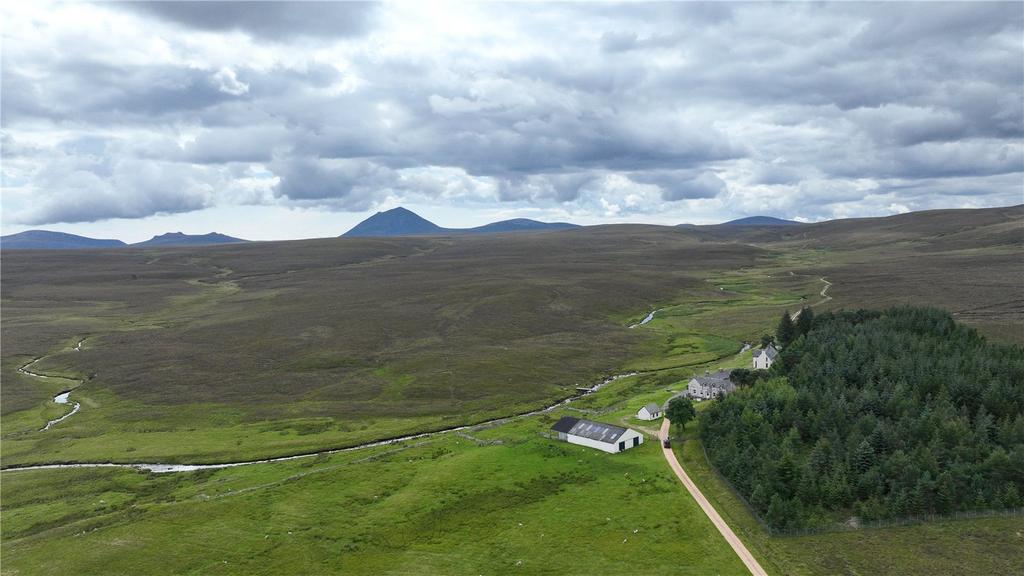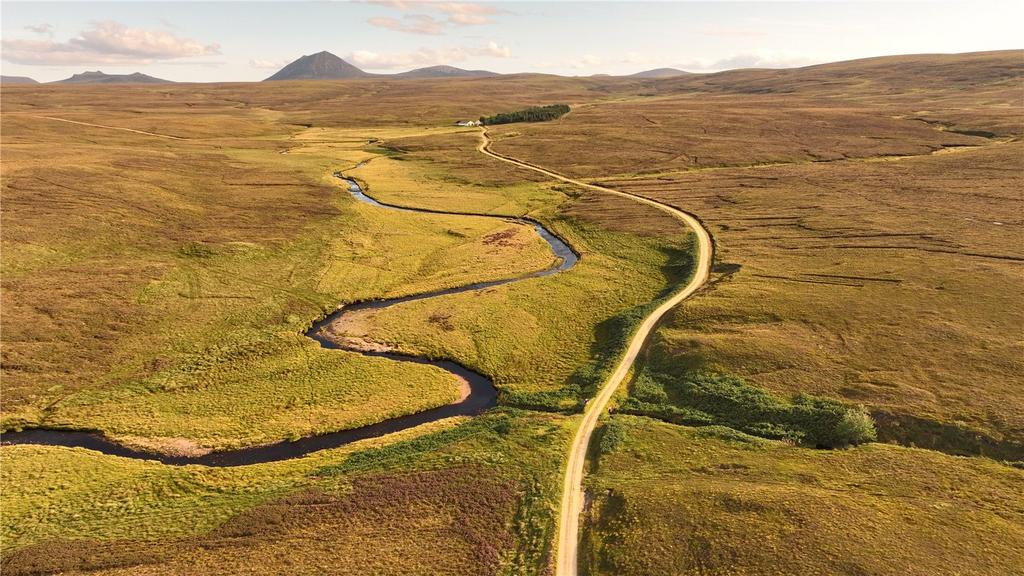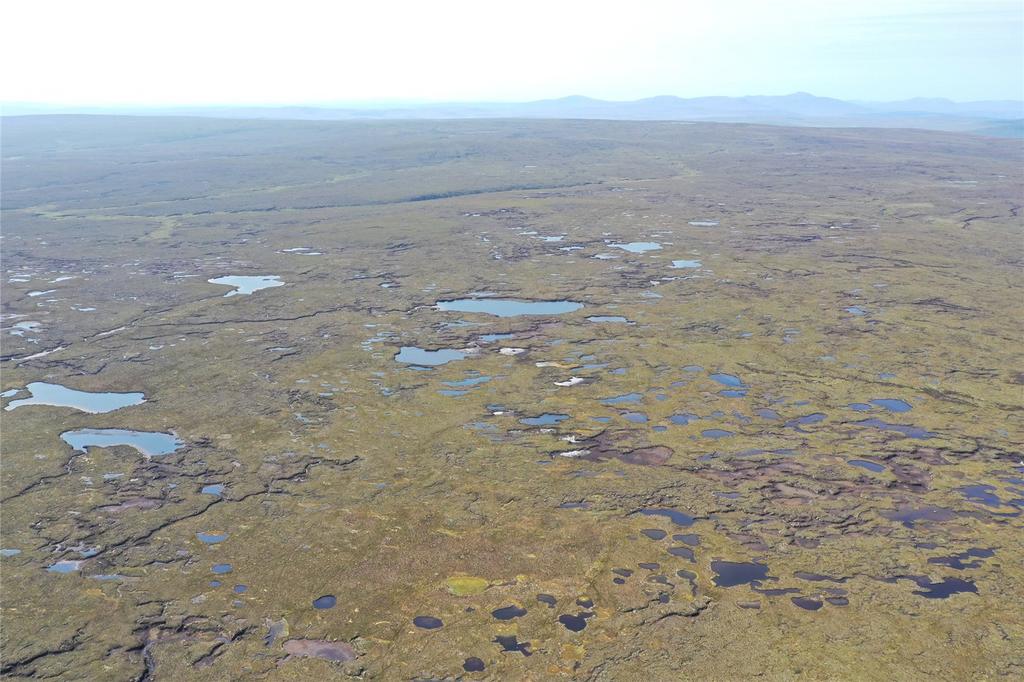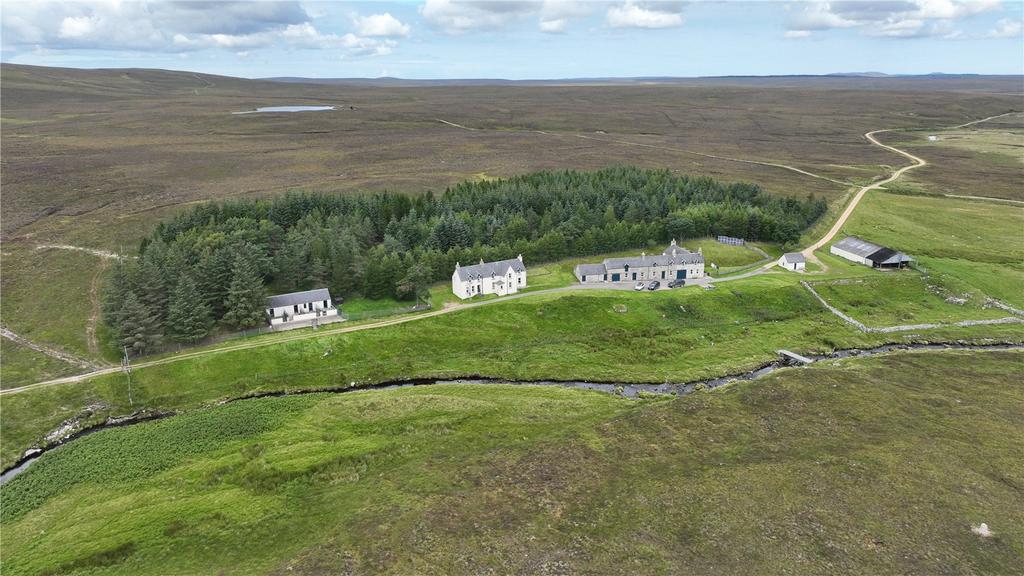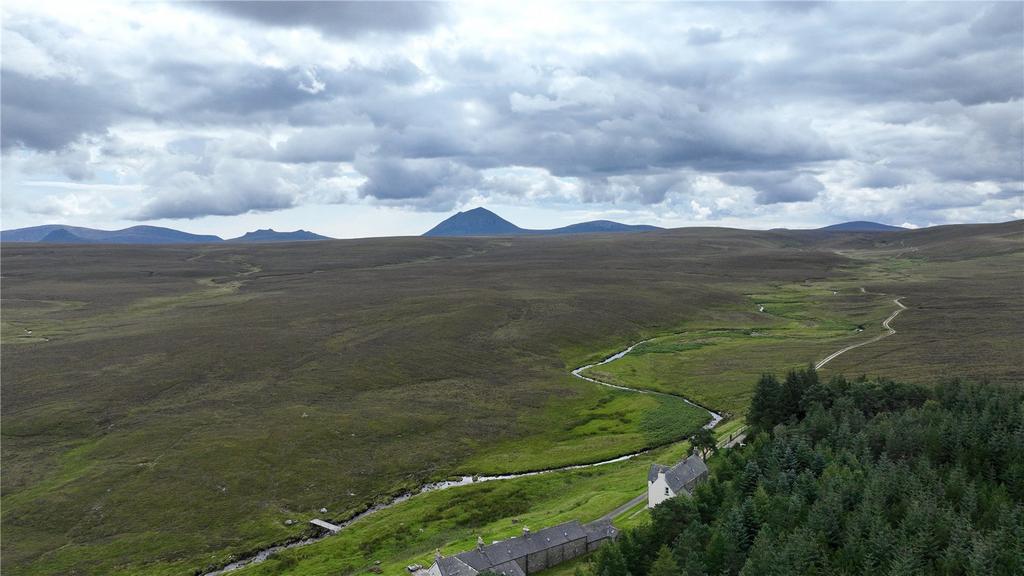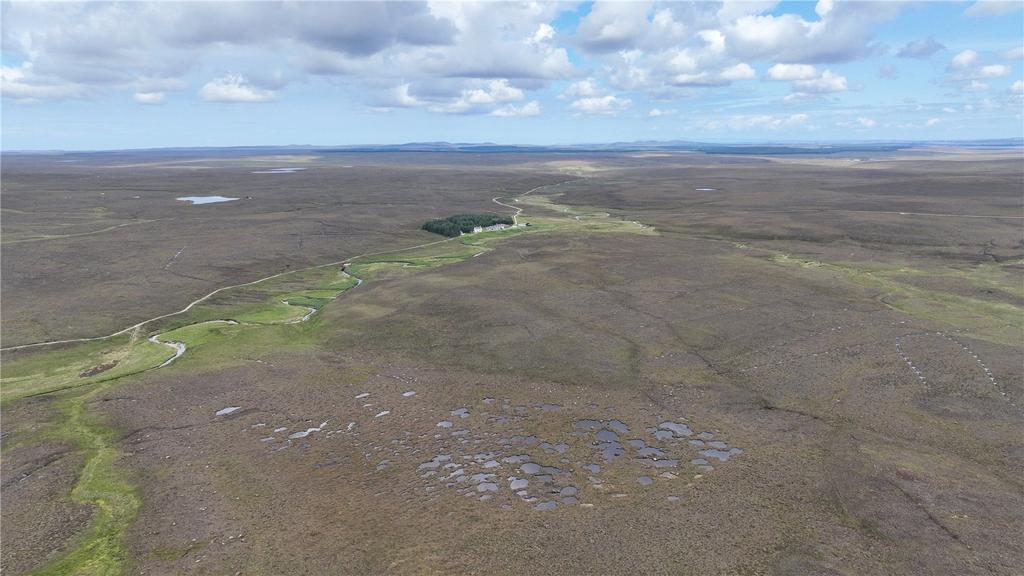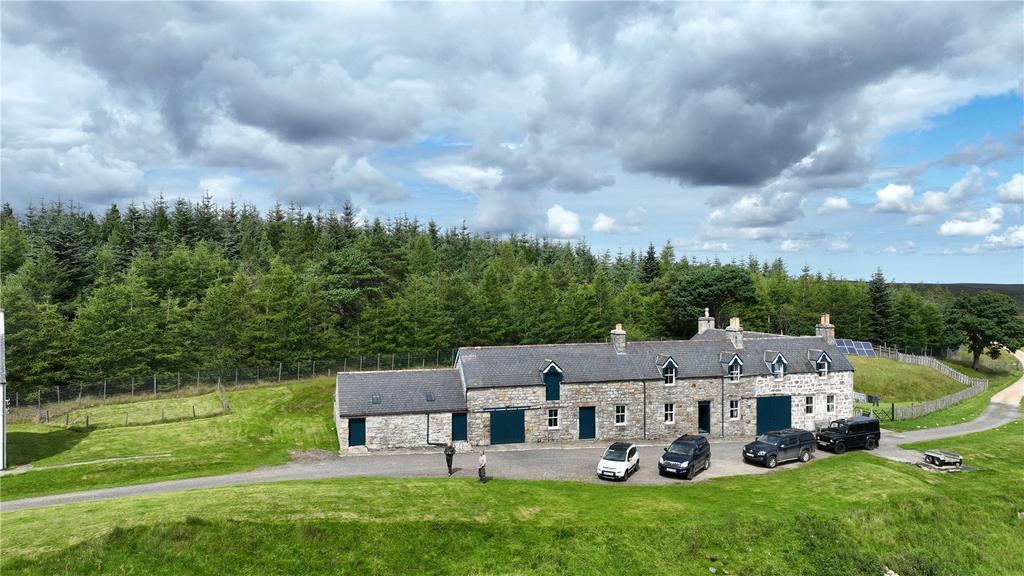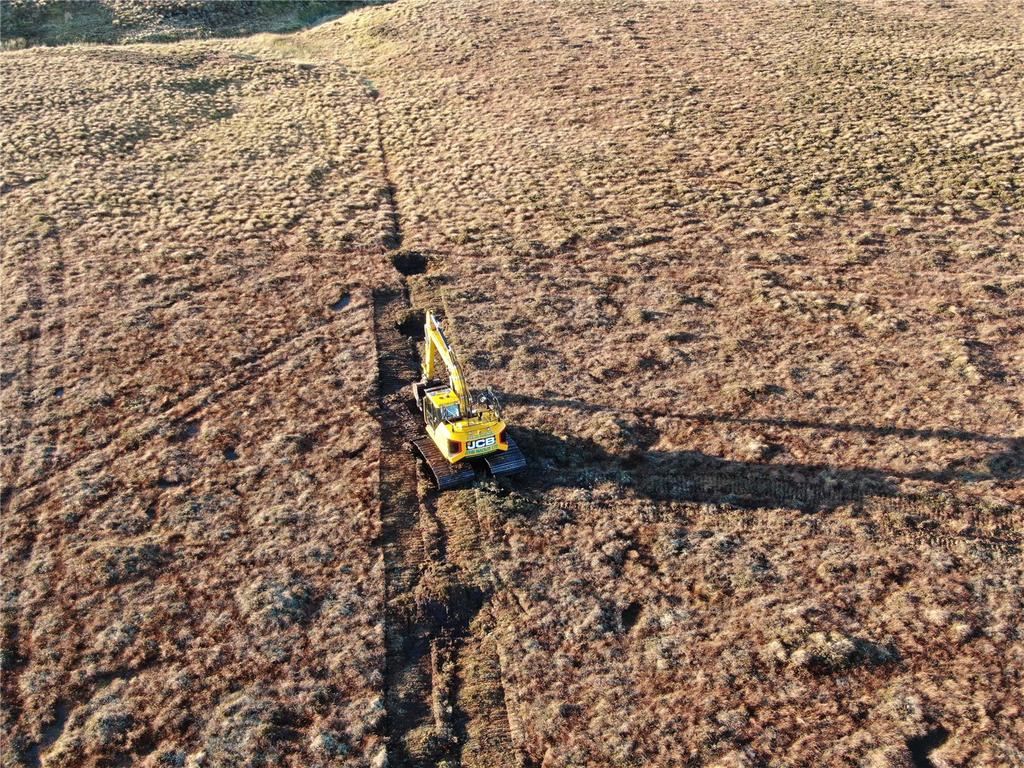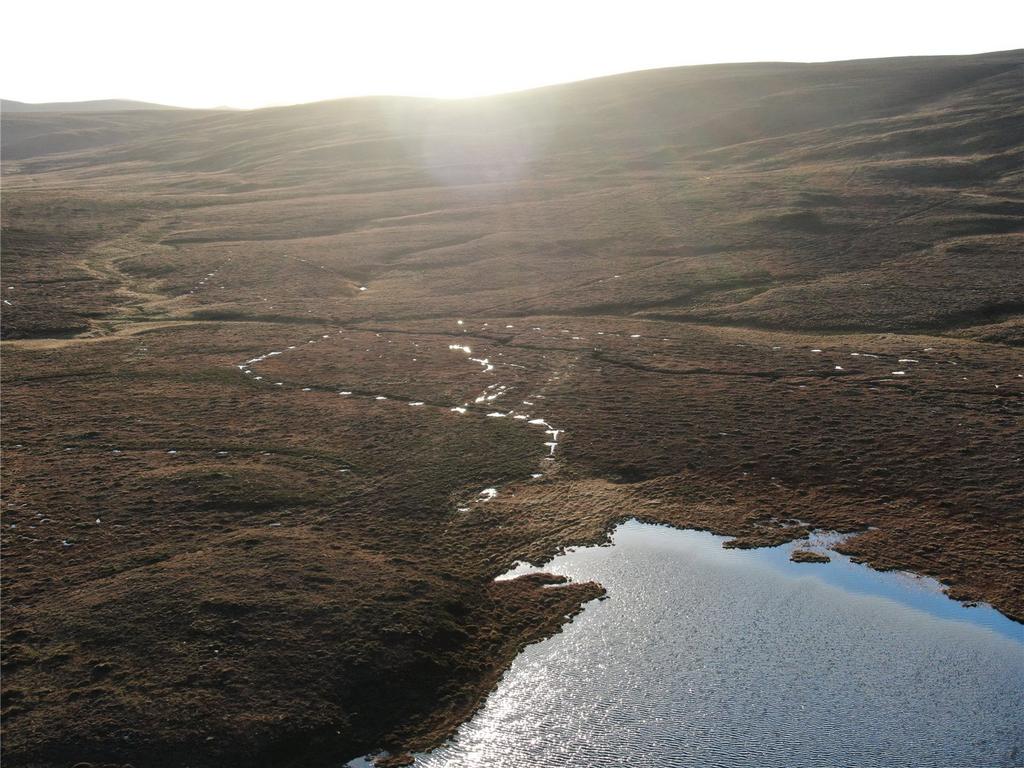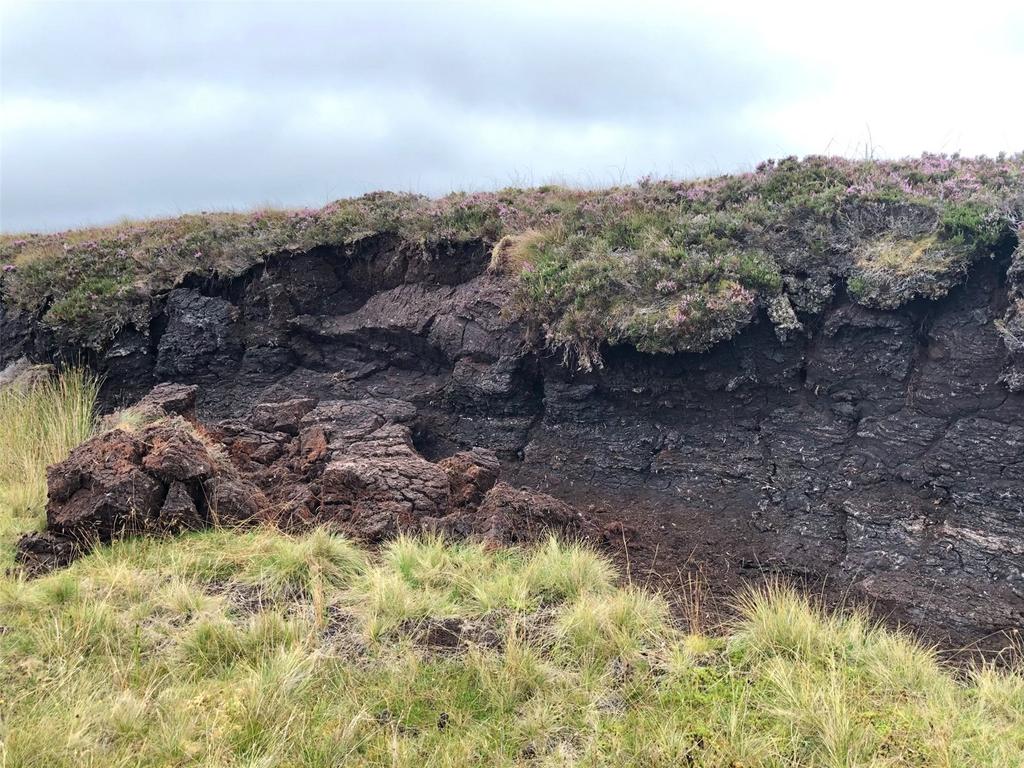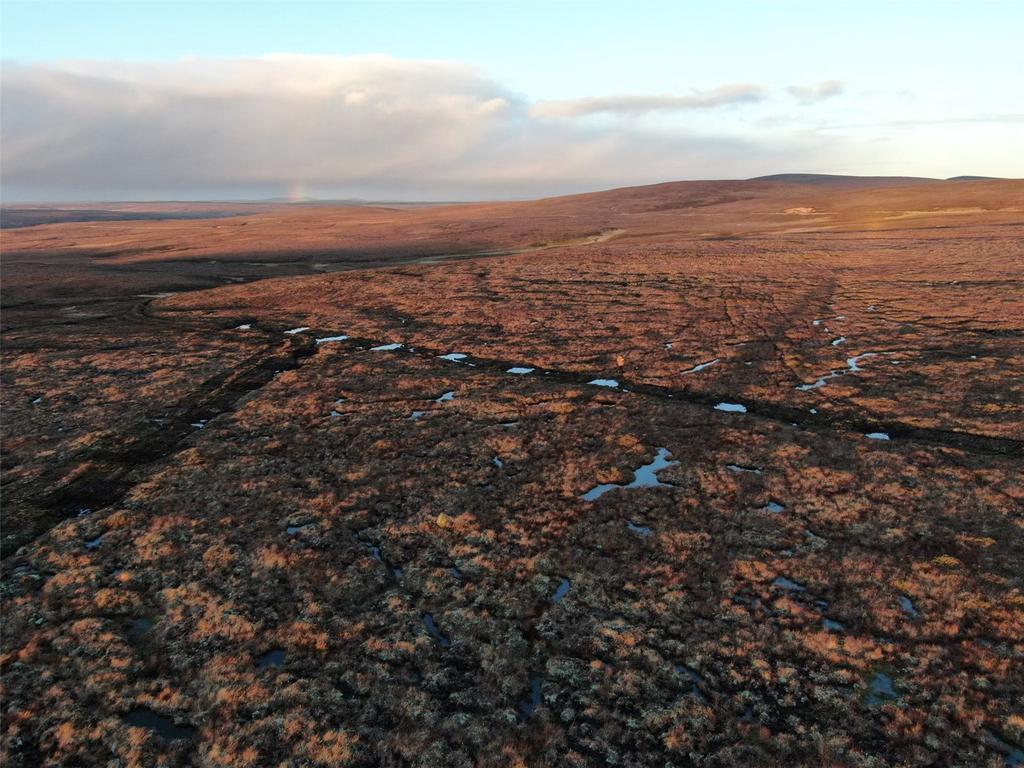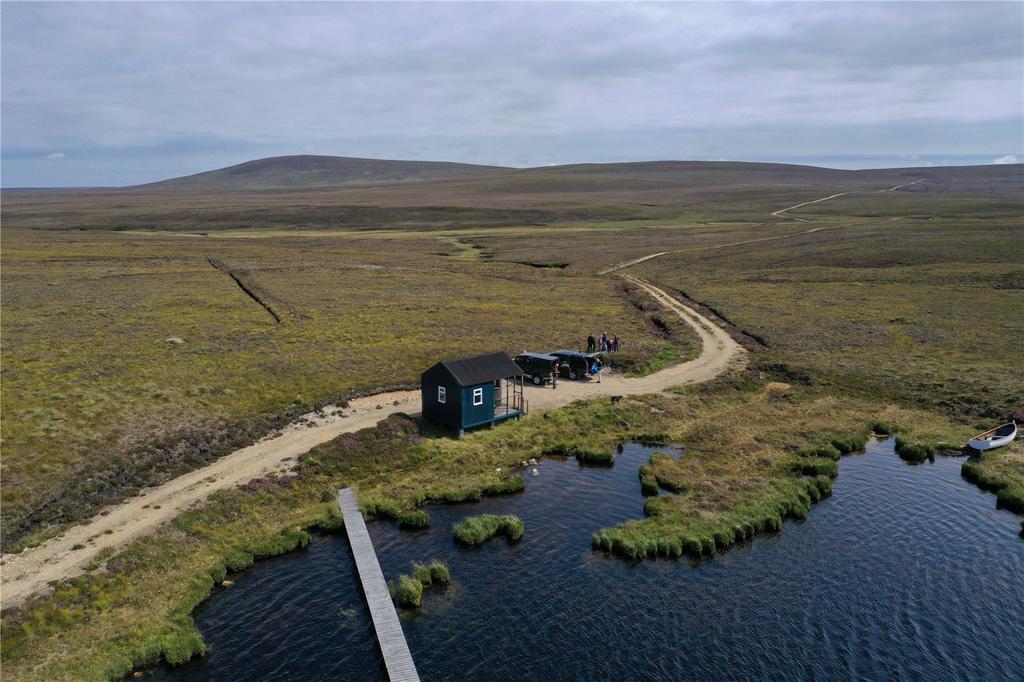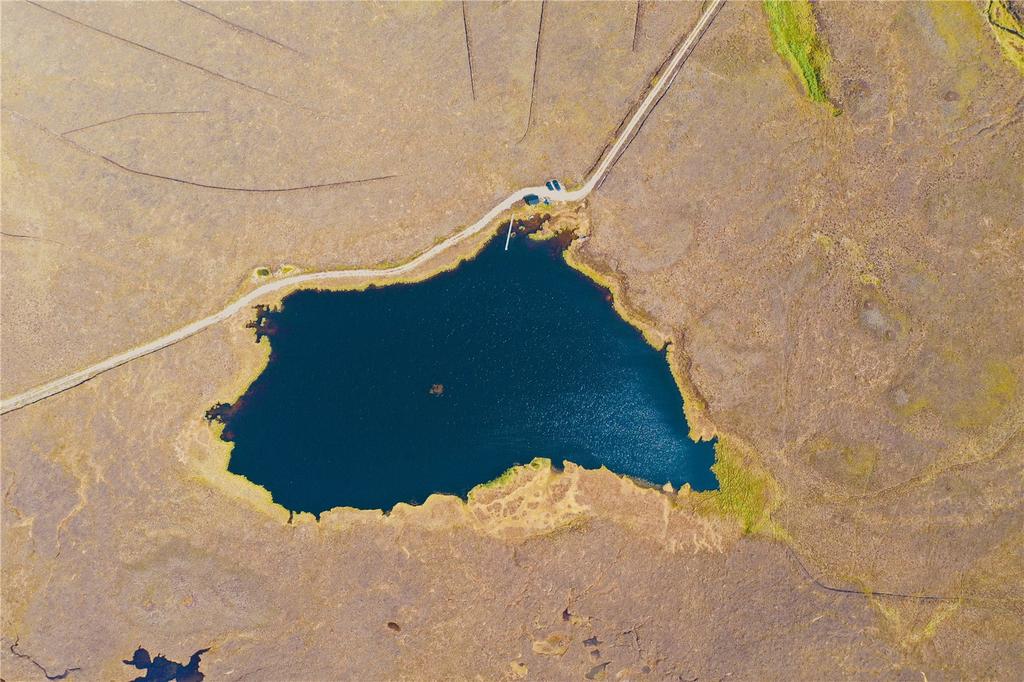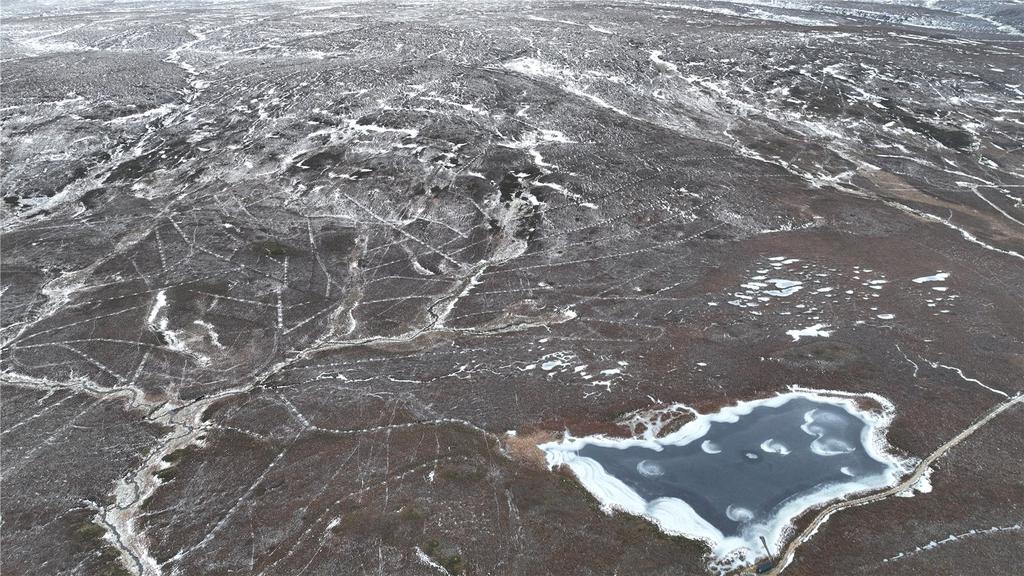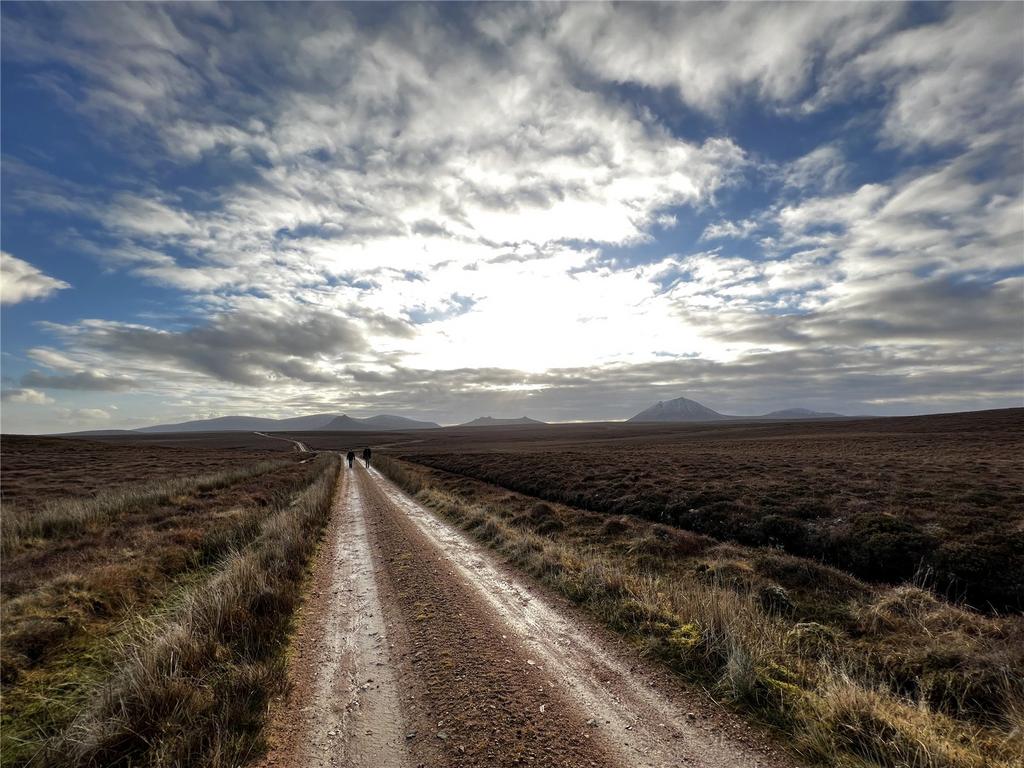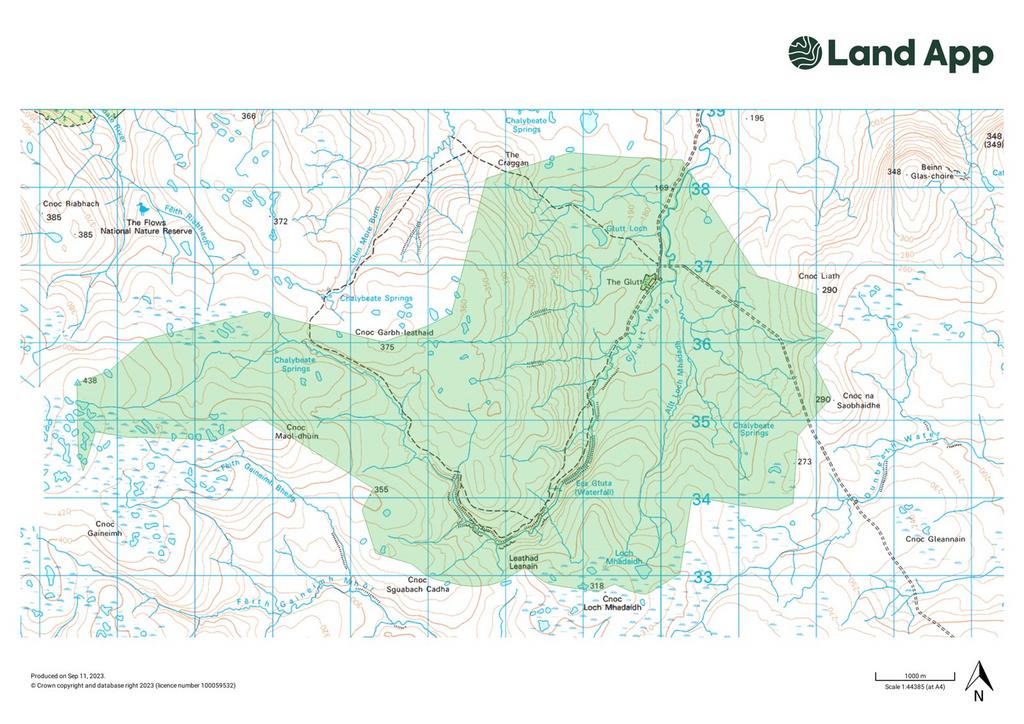No longer on the market
This property is no longer on the market
4 bedroom property with land
Premium display
Under offer
Land
4 beds
7,324.00 acre(s)
Key information
Tenure: Freehold
Council tax: Ask agent
Features and description
- Tenure: Freehold
- In all about 7,324 acres (2,986 ha)
- Glutt Lodge (four bedrooms)
- Keeper's Cottage (four bedrooms) & Bothy (one bedroom)
- Red deer stalking averaging 16 stags (10 year average)
- Walked up grouse shooting over pointers & renowned falconry country
- Three active peatland restoration projects with a potential cumulative claimable emissions reduction of 189,524 t CO2e over 100 years
- EPC Rating = E
*UNDER OFFER*
SPECTACULAR CAITHNESS ESTATE WITH EXTENSIVE PEATLAND RESTORATION OPPORTUNITIES
Description
The Glutt Estate extends to about 7,324 acres in total and offers many of the attributes one might traditionally seek in a Scottish estate: privacy and seclusion, a comfortable and manageable lodge set within magnificent scenery, and for those interested, a special combination of grouse shooting and red deer stalking.
The estate is accessed via a well-maintained hard track running about four miles from Braemore through Langwell Estate before reaching the south eastern corner of the Glutt boundary. There is also a secondary access route from the north through Thurso Estate, which joins the public road near Loch More. As is common with most Caithness estates, the ownership boundaries are generally unfenced but can largely be identified by natural fixed points such as hill tops and watersheds. The topography is gently rolling and rises from 170 metres near Glutt Lodge to 438 metres above sea level at Knockfin Heights towards the western corner.
This vast and distinctive landscape comprises open moorland, peatland dotted with bog ponds, hill lochs and burns, all enriching the natural capital assets of the estate and providing significant opportunities to undertake large-scale environmental projects, including peatland restoration and biodiversity enhancement.
The Glutt is currently under the same family ownership and is, to some extent, managed as part of the neighbouring Dunbeath Estate to the east. The Dunbeath Estate is also available separately on the market. When combined, these two magnificent but contrasting estates extend to about 35,900 acres in total, ranging from dramatic coastline and designed policies to the rugged wilderness of the Flow Country in the west. Details of Dunbeath can be obtained through the selling agents.
Glutt Lodge - Situated in a secluded position towards the northeastern side of the estate, the lodge lies above the banks of the Glutt Water, a tributary of the River Thurso, and is sheltered by mature woodland to the rear (west) of the lodge. Built of rendered and painted stone under a pitched slate roof, the lodge makes an ideal retreat for family and guests to escape the hustle and bustle of modern-day life.
The practical and well-proportioned accommodation is arranged over two floors and benefits from a south-easterly aspect. All of the principal rooms take advantage of the open views over the mesmerising landscape. The ground floor includes an entrance hall, kitchen, larder, sitting room, bedroom and bathroom. A staircase leads to three further bedrooms and two bathrooms on the first floor.
Beyond the lodge is a range of traditional dog kennels and enclosed runs. The Glutt has a long history of breeding, training and working pointers, and this has become a real passion for the current owners and gamekeepers.
Keeper’s Cottage & Bothy - The Keeper’s Cottage and Bothy are situated within an attractive traditional range of stone buildings located a short distance from the lodge. The range also includes a series of general estate stores and workshops with a gravelled parking area along the front.
Keeper’s Cottage provides light and spacious accommodation over two floors. The ground floor includes a kitchen, boot room, sitting room and a bathroom. A staircase leads to four bedrooms and a bathroom on the first floor.
The Bothy is a modest but charming property with tongue-and-groove timber-lined rooms, Caithness flagstone floors and simple period features. The accommodation includes a sitting room and kitchen on the ground floor. A staircase leads to a double bedroom and a bathroom.
Location
Situated southwest of Thurso (40 miles) in Caithness, The Glutt Estate rests 11 miles inland from the coast and 19 miles south of the picturesque village of Halkirk. Embraced by the sweeping, open landscapes that characterise the region, the estate is spread across miles of unspoilt beauty and wilderness.
Caithness is a land apart from the Highlands to the south, featuring a unique blend of landscapes. Largely flat, it boasts a stunning coastline adorned with dramatic cliffs, historic castles and sheltered harbours like Dunbeath, Lybster, Wick and Thurso. The region showcases two distinct faces: the fertile farmland of the northeast and the magnificent Flow Country, an expanse of peat bogs internationally renowned for its habitat that supports a diverse range of birds, plants and insects. The echoes of the past resound in Caithness's rich historic sites, and the influence of the Gaels and Vikings is evident in its place names.
The expansive sandy beaches of the northern coast provide an ideal playground for activities like surfing and sand yachting. Additionally, the area offers exceptional opportunities for fishing, from wild brown trout in numerous lochs on the estate and the surrounding area, to salmon fishing on the rivers Thurso, Halladale, Borgie and Naver. Nature enthusiasts will find Duncansby Stacks, near John o’Groats (50 miles), a haven for large seabird colonies including guillemots, kittiwakes, fulmars, razorbills and puffins.
Halkirk caters to everyday needs with basic shops, a garage, post office, hotel and a primary school. For education, both Thurso and Wick (33 miles) offer secondary schooling, while the North Highland College at Thurso provides an array of further education courses. These towns also offer a diverse selection of shopping and business facilities. Golf enthusiasts can tee off at the 18-hole golf courses in Thurso, Wick and Reay (34 miles). The championship course of Royal Dornoch lies 54 miles to the south.
The Far North Line, one of the most scenic railway routes in Britain, connects Thurso and Wick with Inverness and the south. The nearest railway station is at Altnabreac, six miles to the north. There is an airport at Wick, with direct services to Aberdeen for connecting flights to the south and to Europe.
The Flow Country - The Flow Country is a vast and unique landscape located in Caithness and Sutherland. It is known for being one of the largest areas of blanket bog in the world and is a critical habitat for a variety of plant and animal species. The name 'Flow' is derived from the Old Norse word 'floi,' meaning 'wet, marshy ground'.
The Flow Country is dominated by blanket bog, a type of peatland characterised by its waterlogged and acidic conditions. It forms over thousands of years as mosses grow, die, and accumulate in layers, eventually forming peat.
Despite its seemingly inhospitable environment, the Flow Country is home to a diverse range of flora and fauna. The bog provides a habitat for rare and specialised plant species, including sphagnum mosses, bog cotton and insect-eating plants like sundews. Bird species such as red-throated divers, golden plovers and hen harriers also find refuge here.
The Flow Country's unique ecosystem has led to its recognition as an internationally important site for biodiversity conservation. It is a designated Site of Special Scientific Interest (SSSI) and is part of the Flow Country Ramsar Site and Special Protection Area (SPA). These designations reflect its significance for both its wildlife and the carbon stored within its peat layers.
Peatlands like the Flow Country act as a carbon sink, trapping carbon dioxide from the atmosphere. When peatlands are damaged or degraded, such as through drainage or peat extraction, they can release stored carbon back into the atmosphere, contributing to greenhouse gas emissions.
Through dedicated peatland restoration projects, such as the schemes at The Glutt Estate, the Flow Country is undergoing a transformative journey. By carefully rewetting and restoring these precious peatlands, the restoration initiatives aim to rejuvenate this delicate ecosystem, preventing loss of carbon, support wildlife and mitigate the effects of climate change.
The UK Peatland Programme has been established with the purpose of restoring and responsibly managing two million hectares of deteriorated peatland by the year 2040. Through £250 million of funding via the Peatland Action Scheme, the Scottish Government is supporting landowners to restore degraded peatland. Landowners also have the option to enter into the Peatland Code and generate carbon units for either insetting or potentially sell for offsetting.
Acreage: 7324 Acres
Directions
From Inverness, follow the A9 north towards Thurso. After passing through the town of Helmsdale, continue following the A9 for approximately 14 miles before turning left onto Achorn Road signposted "Braemore 6 miles" (if you reach the village of Dunbeath you have missed the turning). Continue along the minor road for 6 miles to Braemore. There is a red telephone box at the end of the public road near the gate into Langwell Estate. The route from here is only suitable for 4x4 vehicles. Continue along the track for 6.5 miles turning right at the junction. The lodge will be visible as you come over the brow of the hill. The postcode for sat nav purposes is KW12 6UR (note this does not take you to the lodge).
Glutt Lodge location - what3words: ///causes.magically.brink
Additional Info
Peatland - The vast majority of the underlying land at Glutt is blanket bog, made up of nationally important Class 1 and Class 2 carbon-rich soils, deep peat and priority peatland habitat of high, or potentially high, conservation value. Prior to the commencement of the restoration project, approximately 40% of the peatland spread across the estate was in a degraded state, largely on account of artificial drains combined with some areas of sporadic haggs and gullies. The site has very deep peat with many of the peat depth points being more than 4.5 metres.
The restoration project on Glutt has been split into three distinct phases with a potential cumulative claimable emissions reduction of over 189,000 tCO2e over a 100 year period. Phase 1 of the project was completed in January 2022 and has undergone post-restoration validation, with the benefits of the works now evident on the ground. No validated carbon units have been sold to date. The restoration work has been largely funded by the Peatland Action Scheme.
Stalking - The stalking at Glutt is greatly facilitated by the estate’s own hard access tracks which run through the centre of the estate and out to the south western extremities. The open terrain provides some challenging stalking and is stalked with one rifle. At present, the majority of stalking is let to parties staying in the lodge who can take mixed stalking and walked up grouse weeks. Cull returns have been reasonably consistent in recent history with the ten year cull averaging 16 stags and 24 hinds. Extraction of beasts is by Argocat and the estate has its own game larder. The estate is a participating member of the Northern Deer Management Group and facilitates a collaborative approach to deer management in the area with both sporting and conservation objectives in mind.
Walked-up Grouse - Glutt provides the sporting enthusiast with the opportunity to enjoy exhilarating walked-up grouse shooting set against a vast and breathtaking landscape. Like many of the moors of Caithness and Sutherland, the grouse are skillfully pursued with pointers, creating an intimate and exciting sport for smaller groups of guns while presenting an enthralling showcase of the dogs' prowess. The bags typically range from two to five brace per day, with the prime shooting spanning August to early October.
Falconry - Caithness's moors also boast an esteemed reputation for ideal falconry conditions. The absence of trees, combined with the gently undulating terrain and smaller covey sizes, presents a perfect hunting domain for falcons. This landscape serves as a canvas for the art of falconry, enhancing the grace and skill of these magnificent birds amidst the Caithness wilderness.
Fishing - Within the estate boundary, there are numerous lochs and smaller lochans. The largest and most productive is Glutt Loch, which can be reached via a hard track and has a comfortable lunch hut on the shore. There is a second hut toward the upper reaches of the Glutt Water, which can also be readily accessed with a 4x4. These well-built huts provide the perfect spot for picnics with family and friends.
Farming - Glutt carries a modest flock of 60 Cheviot breeding ewes which are run as part of larger farming enterprise over the neighbouring Dunbeath Estate. The land qualifies for Less Favoured Area Support Scheme (LFASS) payments in addition to receiving Basic Payment Scheme (BPS) payments. There is a general purpose farm building (approximately 24m x 12m) located a short distance north of the Lodge.
SPECTACULAR CAITHNESS ESTATE WITH EXTENSIVE PEATLAND RESTORATION OPPORTUNITIES
Description
The Glutt Estate extends to about 7,324 acres in total and offers many of the attributes one might traditionally seek in a Scottish estate: privacy and seclusion, a comfortable and manageable lodge set within magnificent scenery, and for those interested, a special combination of grouse shooting and red deer stalking.
The estate is accessed via a well-maintained hard track running about four miles from Braemore through Langwell Estate before reaching the south eastern corner of the Glutt boundary. There is also a secondary access route from the north through Thurso Estate, which joins the public road near Loch More. As is common with most Caithness estates, the ownership boundaries are generally unfenced but can largely be identified by natural fixed points such as hill tops and watersheds. The topography is gently rolling and rises from 170 metres near Glutt Lodge to 438 metres above sea level at Knockfin Heights towards the western corner.
This vast and distinctive landscape comprises open moorland, peatland dotted with bog ponds, hill lochs and burns, all enriching the natural capital assets of the estate and providing significant opportunities to undertake large-scale environmental projects, including peatland restoration and biodiversity enhancement.
The Glutt is currently under the same family ownership and is, to some extent, managed as part of the neighbouring Dunbeath Estate to the east. The Dunbeath Estate is also available separately on the market. When combined, these two magnificent but contrasting estates extend to about 35,900 acres in total, ranging from dramatic coastline and designed policies to the rugged wilderness of the Flow Country in the west. Details of Dunbeath can be obtained through the selling agents.
Glutt Lodge - Situated in a secluded position towards the northeastern side of the estate, the lodge lies above the banks of the Glutt Water, a tributary of the River Thurso, and is sheltered by mature woodland to the rear (west) of the lodge. Built of rendered and painted stone under a pitched slate roof, the lodge makes an ideal retreat for family and guests to escape the hustle and bustle of modern-day life.
The practical and well-proportioned accommodation is arranged over two floors and benefits from a south-easterly aspect. All of the principal rooms take advantage of the open views over the mesmerising landscape. The ground floor includes an entrance hall, kitchen, larder, sitting room, bedroom and bathroom. A staircase leads to three further bedrooms and two bathrooms on the first floor.
Beyond the lodge is a range of traditional dog kennels and enclosed runs. The Glutt has a long history of breeding, training and working pointers, and this has become a real passion for the current owners and gamekeepers.
Keeper’s Cottage & Bothy - The Keeper’s Cottage and Bothy are situated within an attractive traditional range of stone buildings located a short distance from the lodge. The range also includes a series of general estate stores and workshops with a gravelled parking area along the front.
Keeper’s Cottage provides light and spacious accommodation over two floors. The ground floor includes a kitchen, boot room, sitting room and a bathroom. A staircase leads to four bedrooms and a bathroom on the first floor.
The Bothy is a modest but charming property with tongue-and-groove timber-lined rooms, Caithness flagstone floors and simple period features. The accommodation includes a sitting room and kitchen on the ground floor. A staircase leads to a double bedroom and a bathroom.
Location
Situated southwest of Thurso (40 miles) in Caithness, The Glutt Estate rests 11 miles inland from the coast and 19 miles south of the picturesque village of Halkirk. Embraced by the sweeping, open landscapes that characterise the region, the estate is spread across miles of unspoilt beauty and wilderness.
Caithness is a land apart from the Highlands to the south, featuring a unique blend of landscapes. Largely flat, it boasts a stunning coastline adorned with dramatic cliffs, historic castles and sheltered harbours like Dunbeath, Lybster, Wick and Thurso. The region showcases two distinct faces: the fertile farmland of the northeast and the magnificent Flow Country, an expanse of peat bogs internationally renowned for its habitat that supports a diverse range of birds, plants and insects. The echoes of the past resound in Caithness's rich historic sites, and the influence of the Gaels and Vikings is evident in its place names.
The expansive sandy beaches of the northern coast provide an ideal playground for activities like surfing and sand yachting. Additionally, the area offers exceptional opportunities for fishing, from wild brown trout in numerous lochs on the estate and the surrounding area, to salmon fishing on the rivers Thurso, Halladale, Borgie and Naver. Nature enthusiasts will find Duncansby Stacks, near John o’Groats (50 miles), a haven for large seabird colonies including guillemots, kittiwakes, fulmars, razorbills and puffins.
Halkirk caters to everyday needs with basic shops, a garage, post office, hotel and a primary school. For education, both Thurso and Wick (33 miles) offer secondary schooling, while the North Highland College at Thurso provides an array of further education courses. These towns also offer a diverse selection of shopping and business facilities. Golf enthusiasts can tee off at the 18-hole golf courses in Thurso, Wick and Reay (34 miles). The championship course of Royal Dornoch lies 54 miles to the south.
The Far North Line, one of the most scenic railway routes in Britain, connects Thurso and Wick with Inverness and the south. The nearest railway station is at Altnabreac, six miles to the north. There is an airport at Wick, with direct services to Aberdeen for connecting flights to the south and to Europe.
The Flow Country - The Flow Country is a vast and unique landscape located in Caithness and Sutherland. It is known for being one of the largest areas of blanket bog in the world and is a critical habitat for a variety of plant and animal species. The name 'Flow' is derived from the Old Norse word 'floi,' meaning 'wet, marshy ground'.
The Flow Country is dominated by blanket bog, a type of peatland characterised by its waterlogged and acidic conditions. It forms over thousands of years as mosses grow, die, and accumulate in layers, eventually forming peat.
Despite its seemingly inhospitable environment, the Flow Country is home to a diverse range of flora and fauna. The bog provides a habitat for rare and specialised plant species, including sphagnum mosses, bog cotton and insect-eating plants like sundews. Bird species such as red-throated divers, golden plovers and hen harriers also find refuge here.
The Flow Country's unique ecosystem has led to its recognition as an internationally important site for biodiversity conservation. It is a designated Site of Special Scientific Interest (SSSI) and is part of the Flow Country Ramsar Site and Special Protection Area (SPA). These designations reflect its significance for both its wildlife and the carbon stored within its peat layers.
Peatlands like the Flow Country act as a carbon sink, trapping carbon dioxide from the atmosphere. When peatlands are damaged or degraded, such as through drainage or peat extraction, they can release stored carbon back into the atmosphere, contributing to greenhouse gas emissions.
Through dedicated peatland restoration projects, such as the schemes at The Glutt Estate, the Flow Country is undergoing a transformative journey. By carefully rewetting and restoring these precious peatlands, the restoration initiatives aim to rejuvenate this delicate ecosystem, preventing loss of carbon, support wildlife and mitigate the effects of climate change.
The UK Peatland Programme has been established with the purpose of restoring and responsibly managing two million hectares of deteriorated peatland by the year 2040. Through £250 million of funding via the Peatland Action Scheme, the Scottish Government is supporting landowners to restore degraded peatland. Landowners also have the option to enter into the Peatland Code and generate carbon units for either insetting or potentially sell for offsetting.
Acreage: 7324 Acres
Directions
From Inverness, follow the A9 north towards Thurso. After passing through the town of Helmsdale, continue following the A9 for approximately 14 miles before turning left onto Achorn Road signposted "Braemore 6 miles" (if you reach the village of Dunbeath you have missed the turning). Continue along the minor road for 6 miles to Braemore. There is a red telephone box at the end of the public road near the gate into Langwell Estate. The route from here is only suitable for 4x4 vehicles. Continue along the track for 6.5 miles turning right at the junction. The lodge will be visible as you come over the brow of the hill. The postcode for sat nav purposes is KW12 6UR (note this does not take you to the lodge).
Glutt Lodge location - what3words: ///causes.magically.brink
Additional Info
Peatland - The vast majority of the underlying land at Glutt is blanket bog, made up of nationally important Class 1 and Class 2 carbon-rich soils, deep peat and priority peatland habitat of high, or potentially high, conservation value. Prior to the commencement of the restoration project, approximately 40% of the peatland spread across the estate was in a degraded state, largely on account of artificial drains combined with some areas of sporadic haggs and gullies. The site has very deep peat with many of the peat depth points being more than 4.5 metres.
The restoration project on Glutt has been split into three distinct phases with a potential cumulative claimable emissions reduction of over 189,000 tCO2e over a 100 year period. Phase 1 of the project was completed in January 2022 and has undergone post-restoration validation, with the benefits of the works now evident on the ground. No validated carbon units have been sold to date. The restoration work has been largely funded by the Peatland Action Scheme.
Stalking - The stalking at Glutt is greatly facilitated by the estate’s own hard access tracks which run through the centre of the estate and out to the south western extremities. The open terrain provides some challenging stalking and is stalked with one rifle. At present, the majority of stalking is let to parties staying in the lodge who can take mixed stalking and walked up grouse weeks. Cull returns have been reasonably consistent in recent history with the ten year cull averaging 16 stags and 24 hinds. Extraction of beasts is by Argocat and the estate has its own game larder. The estate is a participating member of the Northern Deer Management Group and facilitates a collaborative approach to deer management in the area with both sporting and conservation objectives in mind.
Walked-up Grouse - Glutt provides the sporting enthusiast with the opportunity to enjoy exhilarating walked-up grouse shooting set against a vast and breathtaking landscape. Like many of the moors of Caithness and Sutherland, the grouse are skillfully pursued with pointers, creating an intimate and exciting sport for smaller groups of guns while presenting an enthralling showcase of the dogs' prowess. The bags typically range from two to five brace per day, with the prime shooting spanning August to early October.
Falconry - Caithness's moors also boast an esteemed reputation for ideal falconry conditions. The absence of trees, combined with the gently undulating terrain and smaller covey sizes, presents a perfect hunting domain for falcons. This landscape serves as a canvas for the art of falconry, enhancing the grace and skill of these magnificent birds amidst the Caithness wilderness.
Fishing - Within the estate boundary, there are numerous lochs and smaller lochans. The largest and most productive is Glutt Loch, which can be reached via a hard track and has a comfortable lunch hut on the shore. There is a second hut toward the upper reaches of the Glutt Water, which can also be readily accessed with a 4x4. These well-built huts provide the perfect spot for picnics with family and friends.
Farming - Glutt carries a modest flock of 60 Cheviot breeding ewes which are run as part of larger farming enterprise over the neighbouring Dunbeath Estate. The land qualifies for Less Favoured Area Support Scheme (LFASS) payments in addition to receiving Basic Payment Scheme (BPS) payments. There is a general purpose farm building (approximately 24m x 12m) located a short distance north of the Lodge.
About this agent

It pays to specialise in a property market as broad as the one served by Savills Edinburgh. From prime commercial offices and out of town retail parks to the cream of city property, to country houses and sporting estates, the choice is as large and varied as the area we cover. That’s why we have dedicated teams specialising in prime residential property, farms and estates, land sales, commercial property, valuation and planning, right across the full property spectrum.
